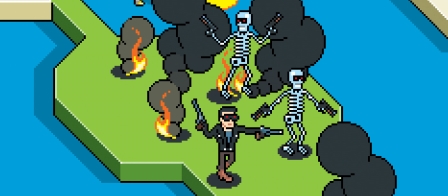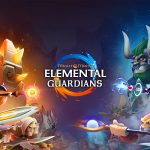AIs fight to the death in ‘Doom’ contest next month
Google DeepMind took a leap forward last year when its artificial intelligence agent mastered 49 Atari 2600 games. The learning system, or “deep Q-network” (DQN), that DeepMind designed achieved this mastery through general experience, rather than specific programming for each game. This milestone is just one step along a grander path toward the general-purpose “smart machine”: an AI that can master any task with minimal input. DeepMind’s work in this field is groundbreaking, and it’s helping advance the field in ways you might not expect.
Wojciech Jaśkowski is an assistant professor at the Institute of Computing Science (ICS) at Poznan University of Technology, Poland. After reading about DeepMind’s feat in the scientific journal Nature, he began to think about the possibilities. If an agent could learn Atari 2600 with our current levels of knowledge, why not push the envelope — why not try a 3D game? Jaskowski settled on the 1993 first-person shooter Doom. It has low power requirements and, more important, it’s open source. He assembled a team of university students from ICS with the aim of building a platform that would facilitate testing AI agents.
The framework they created, called ViZDoom, allows for the development of bots that can play Doom. It’s intended primarily for research in machine visual learning, which means that bots have access only to the screen buffer. They play by “seeing” the images on-screen and have no access to any information within the game’s code. That’s the key difference between ViZDoom bots and the regular “AI” characters that exist inside most first-person shooters.
Jaśkowski’s team was successful in its endeavor. They submitted a paper back in May proving not only that their creation was an effective research platform, but that neural networks were capable of learning visually in a 3D, first-person-perspective environment. Now anyone can download the ViZDoom platform and test out their AI systems using it. The reaction from the AI community has been very positive. It’s been downloaded by several high-profile educational institutions, and Jaśkowski said even DICE, the video-game company best known for the Battlefield series, has been using VizDoom internally to research AI.
To drive usage of the platform forward, Jaśkowski is running a competition in collaboration with the IEEE Computational Intelligence in Games conference (CIG). Anyone can his or her creation to compete in an AI-only deathmatch, with the results being announced at CIG in late September. So far, three warm-up matches have taken place, and a number of entrants have pitted their creations against one another, while others have held their cards close to their vest, preferring to save their bots for the final contest. The purpose of it all, Jaśkowski told me, is really about seeing what is possible with the current crop of AI technology.
How exactly teams will solve the questions ViZDoom poses is up to them. So long as the only data being fed to the bots is the screen buffer, anything goes. They’ll have to understand what’s wall and what’s floor, what’s a character and what’s a power-up. And that’s without working out the shooting — bots can use only rocket launchers, which makes things harder, because if you fire a rocket next to a wall, you kill yourself. In footage of the first warm-up round, lots of bots struggled with the basics. It’s likely that many are building on DQN, the deep learning network built by DeepMind to conquer the Atari 2600.
Although the final lineup won’t be confirmed for a few weeks, individuals from educational institutions like MIT and Stanford University have been active in the competition’s official discussion group, as have employees from Intel, Google and other large corporations.
ViZDoom is emblematic of the AI and machine-learning community’s spirit of collaboration
That Google might be taking part in a competition that its research helped spawn is emblematic of the AI and machine-learning community’s spirit of collaboration. It’s a field in which Facebook, Google and Twitter, which in many ways compete with one another, work together. Take Torch: It’s an open-source library that’s hugely important for machine-learning projects. It also happens to be maintained by scientists and engineers from those three companies, and contributed to by many, many others. There’s an understanding that, although the products that come from AI research may compete with one another eventually, getting to the point at which machine learning can power those products will be a lot easier working together than alone.
Jaśkowski’s team and ViZDoom might seem like a tiny part of what is an enormous field. But without the contributions of the many like-minded students and academics working on AI, we’d be years behind where we are today.
(12)













